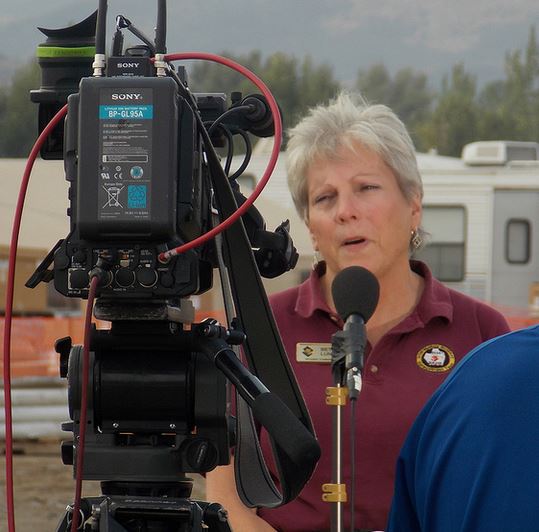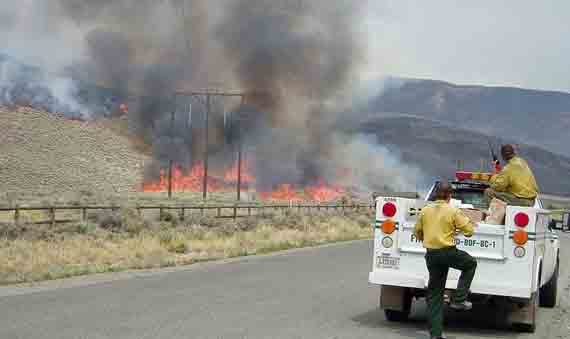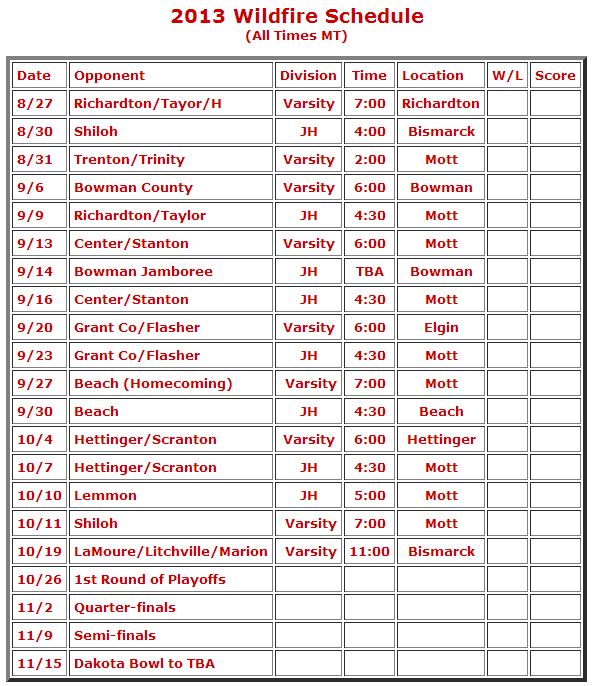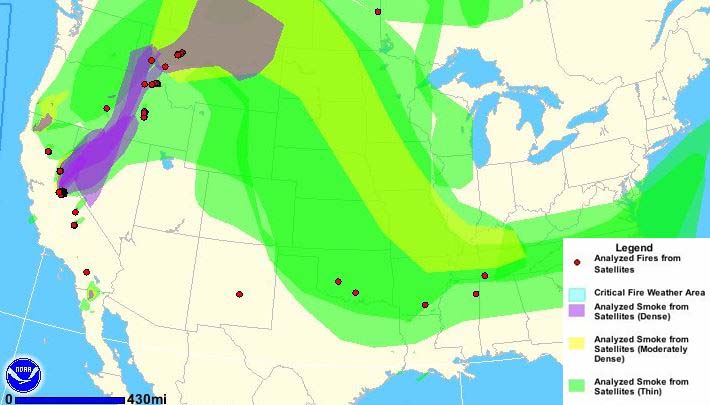Author: Bill Gabbert
Let’s root for the Wildfire
Let’s root for the Wildfire! No, not THAT kind of wildfire. There is a school in North Dakota whose sports teams are named “Wildfire”.

The Mott/Regent School in Mott, North Dakota (map) is the proud home of the Wildfire football team — with a distinguished record, according to their website. In their nine-man football division, they were state champions in 2007, made it to the state semi-finals 2010, and to the state Quarter-Finals in 2006 and 2011.
Other sports teams at the school are also called Wildfire, including basketball and track. The last line of their school song is:
…and rage on to Victory!
Their website proudly says:
I asked how they came up the the name. When the schools in the two towns, Mott and Regent, consolidated, they held a contest for a new name, and Wildfire was the winner.
So lets root for the Wildfire this year.
It’s good to have a schedule for Wildfire, don’t you think?:
We were able to find a couple of other football teams named Wildfire. Did you know there is a Women’s Spring Football League? I didn’t either. One of the teams in the league is the West Virginia Wildfire. From their website:
The WV Wildfire is a women’s tackle football team based in Charleston, WV. We are proud members of the Women’s Spring Football League in the 8man Division. We began our inagural season in April 2011, through hard work these ladies brought home the National Championship in 2012 after winning thier division and conference titles, along with Bob Koontz as WSFL 8s Division Coach of the Year, and Courtney Cole, WSFL 8s Division MVP.
And, the Birmingham Wildfire was a minor league professional football team that competed in the Southern Conference of the LaBelle Community Football League in 2009.
Thanks go out to Jim
Fire Camp – Rosebud Complex – 2012
“People from all walks of life show up in one spot, they build a team, they build a city, they fight the fires, put it out, save the day, feel great about their public service, and they all disappear again.” Incident Commander Stan Benes.
Today we have an article written by W. Scott Olsen. It tells the story of his visit to the Rosebud Complex fire camp in August of last year, a fire that burned 171,000 acres south of Rosebud, Montana. We have previously mentioned other wildfire-related articles written by Mr. Olsen, who is a professor of English at Concordia College in Moorhead, Minnesota, but this is the first time we have published one in its entirety. He describes it as an insider’s look at the morning briefing at the Rosebud Fire Camp last year.

Fire Camp ~Rosebud Complex ~ 2012
I am tremendously early.
Southeastern Montana is on fire and I am heading toward the Rosebud Complex fire camp. I have directions, hastily written on a yellow legal pad, fluttering in the open window gusts of my Jeep, but in truth I have no idea how far I need to go. All I know is that the morning briefing happens first. No set time. Just first.
Yesterday, on the phone with the public information liaison, I was told I needed boots if I was going into the black, into the burned and burning. At least eight inches tall. Lug soles. They had the fire resistant green pants and yellow shirts for me there, as well as a hardhat and gloves. But I needed my own boots, and a backpack to carry water. No problem, I said. The Jeep headed west.
I found a hotel room in Miles City but didn’t sleep very well. Two hours from here to the fire? I had no clue. State highways, rural routes, back roads and gravel are difficult to time.
I left at 4:00 a.m.
I am tremendously early, the world still dark, so I pull over at a historical marker. The Grave of the Unknown Man. “In 1886,” the marker reads, “ranchers buried near here what many believe to be the remains of Private Nathan Short…Short was believed to be carrying a message from General Custer at the Battle of Little Bighorn.”
On a hill behind me, a lone horse stands in silhouette at a fence line, watching me. Behind him, the daybreak is an indigo highlight on the horizon.
Perhaps I was driving fast.
&&&
Imagine the way it must begin. Lightning and then fire. Thick full smoke in the air. The local fire engine crew arrives. They are probably volunteers. They spray the water their engine holds and dig whatever fire break they can. But the wind comes up and the fire grows fast. Grass fire can race over three acres in a minute and there is no way the one crew can get ahead of it. Embers and firebrands are lifted by the wind and start new brush when they fall. The local crew calls for help. There are more engines, more crews. And behind them comes the supply trucks, the water and food, the equipment—shovels and Pulaskis and radios—and the need to keep it all working, to keep it all organized, to keep it all sane. Way out in the open country there is suddenly a small, temporary, town. It wasn’t here yesterday. It might not be here tomorrow.
Continue reading “Fire Camp – Rosebud Complex – 2012”
Smoke map, August 25, 2013
Wildfire briefing, August 24, 2013
Transformer explodes, starts fire behind fire station
An electrical transformer on a power pole exploded and started a fire behind a fire station in Ramona, California early Saturday. Here is an excerpt from the Ramona Patch:
The incident occurred about 7:45 a.m. at Cal Fire Station 80 at 829 San Vicente Road south of H Street, Cal Fire firefighter-paramedic Brandon Morgan said.
“We were just sitting in the station and we heard an explosion outside and we went out and a power pole was on fire about 200 yards away,” Morgan said.
Prompt action by firefighters quickly extinguished the blaze before it spread.
Firewise landscaping saved homes in Utah
Removing and managing vegetation around homes saved several of them during a wildfire in Utah, according to the Salt Lake Tribune. Eight homes were destroyed by the lightning-caused Rockport Fire near Rockport Reservoir last week.
Scoopers help slow wildfire in Bosnia-Herzegovina
Some Canadair CL-415s helped slow a wildfire in the Jabalnica region in Bosnia and Herzegovina on Friday, but Saturday it took off again and came within 200 to 300 meters of the Jablanica hydro-electric plant. The Croatian government made two water-scooping air tankers available to suppress the fire, at the request of the Bosnian Council of Ministers.
Granite Mountain 19 widow gives birth
One of the widows of the 19 firefighters from the Granite Mountain Hotshots gave birth Thursday to a 6 pound, 15 ounce son. Amanda Misner who was married to Sean Misner, named him after his father, giving him the name Sean Jaxon Herbert Misner.
The child’s father and 18 others from the fire crew were killed on the Yarnell Hill Fire on June 30, near Yarnell, Arizona.
Beth Lund, Incident Commander on the Beaver Creek Fire

Beth Lund is one of two female Incident Commanders on Type 1 Incident Management Teams, the largest and most capable teams that run large incidents. Jeanne Pincha-Tulley is the other.
Ms. Lund’s Type 1 Team has been managing the Beaver Creek Fire near Ketchum, Idaho which is one of the fires getting a lot of national media attention due to the number of acres burned, 111,000, and the movie stars homes that have been threatened by the fire. The Idaho Mountain Express has an article about her. Here is an excerpt:
In the modern world of firefighting, mavericks are discouraged, a strong and flexible mind excels and only quiet competence is rewarded.
It’s in this world that a 58-year-old woman, who is halfheartedly eyeing a retirement in which she will learn to quilt, has risen to become the face of fire news at its best and worst.
She is one of only two women in the already tiny national cadre of 16 U.S. Forest Service Type I incident commanders—the people who try to tame the most complicated wildland fires.
“My policy is to tell what I know and to tell the truth while being mindful that we don’t want people to hear it from the news first,” says Beaver Creek Fire Incident Command Leader Beth Lund.
She’s been the calm center in a relentless stream of media and public inquiry since arriving nearly two weeks ago to manage and expand the efforts to repel the fire that threatened the length of the Wood River Valley.
Even in the diciest moments as she bounces from gathering recon to live TV on demand, to fielding questions from strangers, with nearly every step she takes, she remains unflustered—even when she delivers unsavory news.






